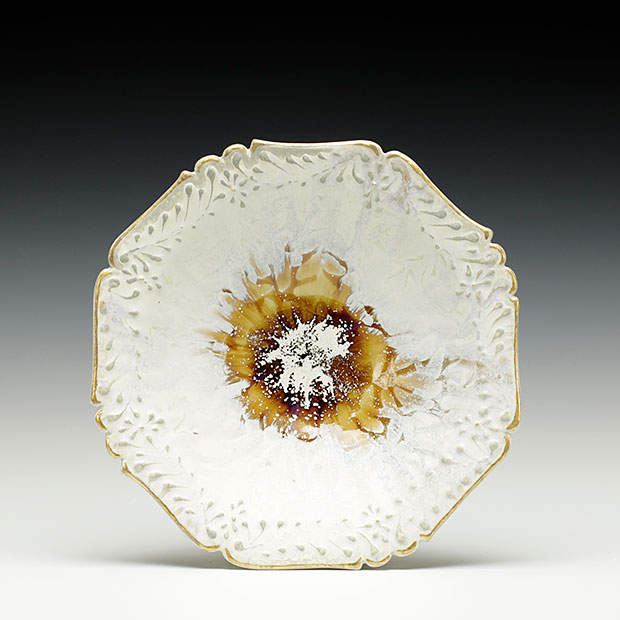Biography
Mike Stumbras was born in Chicago, Illinois. He studied at St. Olaf College, where he received a BFA in studio art and a BS in biology in 2007. He completed residencies at 323 Clay in Independence, MO; The Clay Art Center in Port Chester, NY; and The Carbondale Clay Center in Carbondale, CO. Stumbras received an MFA in Ceramics from Louisiana State University in 2017. Formerly a visiting assistant professor at the College of William and Mary and a Lecturer at Southern Illinois University, Carbondale, Stumbras has exhibited work nationally and internationally. He is currently living and working in Kansas City, Missouri.
Statement
My work explores the beauty and horror of our existential uncertainties as creatures seeking meaning through labor and investigations of history. These wheel thrown, and cone 10 reduction fired vessels combine inspirations from historical production ceramics with contemporary studio art practices.
My work addresses design elements from 18th and 19th century European slipcast ware. The historical work that inspires me presents a criterion for beauty that often seems empty in regards to contemporary considerations regarding the human condition. Although much of the work I am inspired by involves the use of commercial production techniques, my pieces are created with the immediacy and individuality attributed to hand processes and alternative firing methods. In this dialogue between the tangible past and immediate present, the work appears both conspicuously old fashioned and relevant to contemporary concerns.
It is the strong connection I feel to the chaotic and imperfect nature of handcraft that, to me, highlights the victories and tribulations in the labors of the handmade. I embrace the errors of the hand and artifacts of the heat from firing because, although pots themselves may be inanimate know-nothings, they still have something to teach us about the natural and the arcane.
I place an emphasis on making ceremonial pieces that speak to the passage of time and embrace the propensity for ceramic vessels to be heirloom objects. The work seems to suggest that it bears witness to the ebb and flow of civilizations, of ideas, and of people. As vessels that exist through time as humans cannot hope to, these pots whisper to us to confront the knowledge we share of our progression toward inevitable demise and our march into obscurity. It is both a liberating comfort, and a savage terror that the dead cannot return, except in stories and
dreams.
 $250
$250
 $250
$250